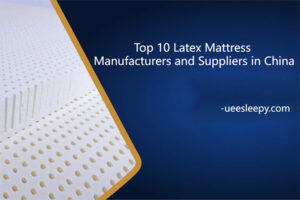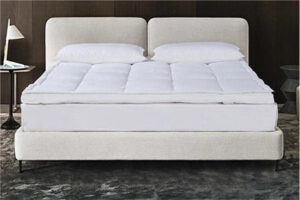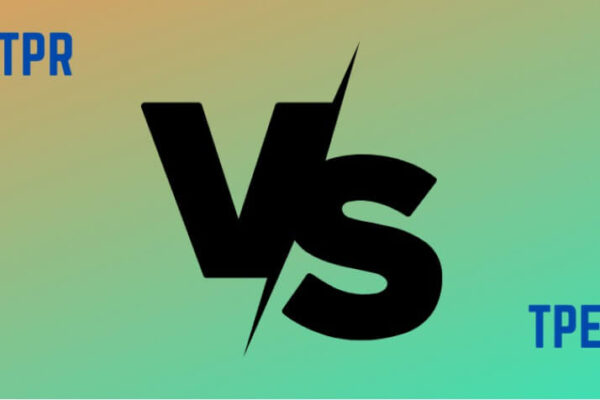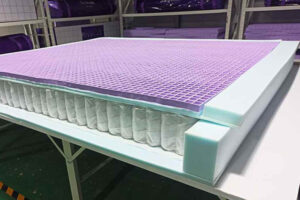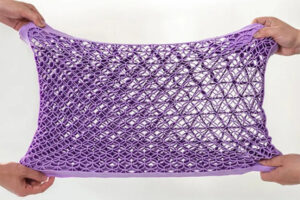If you’re not sure about the difference between TPE and TPR, you’re not alone. Both TPE and TPR belong to the family of thermoplastic elastomers – and while there is no clear industry standard to distinguish them, at least not yet, the confusion is evident. Their characteristics appear similar on the surface. This TPE VS TPR guide will help you better understand their difference.
1. What is the difference between TPE and TPR?
There are definitely some differences between TPE and TPR, and it really depends on their base material. TPE is modified by SEBS substrate, and TPR is often modified by SBS. The difference between TPE and TPR can be better understood by breaking down the meaning of SEBS substrate and SBS.
2. What are SEBS and SBS?
Styrene ethylene butylene styrene block copolymer (SEBS) is a product of hydrogenated SBS. But what exactly is SBS? Styrene-butadiene-styrene copolymer with soft-touch properties is widely used by designers, especially in hand tools.
What does this mean for SEBS? It is the act of introducing molecular hydrogen into unsaturated molecules under special reaction conditions. This is done to ensure that the molecular structure becomes saturated, which provides anti-aging properties as well as anti-yellowing properties. Besides that, it also ensures higher heat resistance and corrosion resistance than SBS, so the performance output of TPE is higher than that of TPR.

3. TPE selection
There are many TPE sets to choose from, including:
Polyolefin blends (TPE-O)
Styrene block copolymers (TPE-S)
Elastic alloys
Thermoplastic polyurethanes (TPE-U)
Thermoplastic polyamides (TPE-A) Thermoplastic
Copolyesters (TPE-E)
In engineering, TPE, TPR, and Flex are all widely used, but for different purposes. TPR, specifically, has an unsaturated molecular structure similar to rubber, making it elastic.
4. Shore hardness tester
TPEs are thermoplastics, of course, but they still have a similar elasticity to cross-linked rubber. A Shore durometer measures its softness or hardness. Available as a soft gel material – from 20 Shore OO to 90 Shore AA – TPE has similar qualities to cross-linked rubber.
After reaching 90 Shore AA, they are introduced to the Shore D grade, which means they can be formulated to achieve a hardness of up to 85 Shore D. TPR is available in a variety of durometers, from 20 Shore OO to 85 Shore D – again, this is in line with TPE.
5. What are thermoplastic elastomers?
Composed of soft and hard domains, TPE is a solid, multiphase material. Some engineers may wonder why they are rubbery – and for good reason.
The temperature range and unique design of a TPE are determined by its glass transition temperature during the rubber phase, and its melting temperature or glass transition temperature during the hard phase of its manufacture.
TPE compounds or TPE-S contain more than one type of polymer (an elastomer that imparts elastic properties to the material) and are used for various purposes in the engineering field.
Some applications of TPE include:
- Food
Since anything that comes into contact with food requires food contact approval in the country where it is used and sold, TPEs with food contact approval are ideal for manufacturing baby food components. Think of miniature spoons or toddler cup spouts.
- O-ring
TPE seals are usually made of thermoset rubber and can be colored or white. They can be co-molded to make two-component seals, and they are more efficient in manufacturing. They are also friendly to the environment as they use less energy than thermoset rubber and take less time to manufacture.
- Medical insurance
We all know that healthcare apps must meet strict regulatory standards. This is where TPEs come in, as they can be sterilized using ethylene oxide, autoclaves, or gamma rays. Elsewhere, they can be manufactured to provide high purity and biocompatibility and provide an alternative to silicone, PVC, rubber, or latex.
- Caps and Closure Liners
PVC bottle cap liners provide a convenient seal between the contents of a bottle and the surrounding environment of metal caps and plastic caps. That said, TPE liners offer many advantages over PVC. One of them is that they prevent oxygen transmission. It’s worth mentioning that TPEs can be designed for everything from bottle caps and closure liners in milk to carbonated soft drinks.
- Bedding
Some bedding manufacturers use TPE as a raw material for bedding, such as pillows or mattresses. This will give them a higher elasticity, which is currently a very popular bedding.
6. What is TPR?
TPR has the property of combining the properties of rubber with the moldability of thermoplastics. For example, think of custom floor mats in a car. TPR is also the standard material for truck bed liners.
Features of TPR:
- Keep its shape
- It has varying degrees of flexibility
- Flexibility can be improved by adding more rubber to the chemical composition
- Can be formulated so that the rubbery smell is not obvious
- Light
- Can be colored according to your requirements
As opposed to TPE, TPR is used in applications that require bonding, such as footwear and toys. You’ll also find that TPR comes into play in:
- Pipeline
- Wire and Cable
- Sealants
- Asphalt additive
- Car Accessories
- Gasket
- Package
- Film and Sheet
Like TPE, TPR combines the flexibility of rubber and plastic — and when it burns, TPR emits a thicker, darker smoke than TPE. When working with thermoplastic elastomers, engineers were able to stretch them to modest elongations. They can then be returned to their original shape; this is done to provide a longer life. Besides that, the fact that TPR offers a better physical range than other materials is a big attraction.

7. TPE vs. TPR: How do they differ?
The following is a comparison of TPE and TPR in different aspects.
1) Different sensitivity
TPE is matte and has a smooth appearance. It also has slight astigmatism. It feels smooth and comfortable. In contrast, TPR is more viscous, especially when the temperature is around 30˚ to 40˚C/ 86˚ – 104˚.
2) In manufacturing
TPEs offer significant cost savings – because they can be processed on plastic machinery, reducing the overall price per item. TPEs combine the aesthetics of traditional thermal rubber with the ease of processing during manufacturing for high-volume injection molding.
Like TPR, TPE is also 100% recyclable due to shorter processing times. They can each be used up to five times, though this may vary for different tiers. TPE’s consistency ensures engineers can rely on it for their projects. Overall, TPEs save energy and require less manpower, are lightweight, and can be blow-molded or thermoformed.
Typically, costs can be reduced to the number of cavities that can be made at each stage of the manufacturing process, and the TPE process requires about four cavity molds in a 30-second molding cycle. With four cavities required in a 30-second cycle, eight parts per minute could mean 480 per hour. A rubber process can mean twice as many cavities are needed. However, engineers should not be discouraged. The reason is that the TPE process may still offer a cost advantage.
A thermoplastic rubber that combines the look, feel, and elasticity of thermoset rubber with the processability of plastic. This brings us back to where we started – the common qualities of TPR and TPE. Injection molding can also be done with TPR. Thermoforming and blow molding are also options. Because it is very malleable, it is ideal as a custom molding material.
Rubber materials are believed to have improved tensile strength, while TPE materials are still considered “poor” in terms of physical properties. You should judge projects and their components on their merits, use the right tools and toolkits for the job, and ensure a great deal of forward planning is in place.
8. Conclusion
You’ve got the long version. If you’re still confused, think of it this way: TPE is essentially a softened version of TPR. TPE is the way to go when you need more flexibility and softness.
How useful was this post?
Click on a star to rate it!
Average rating 5 / 5. Vote count: 1
No votes so far! Be the first to rate this post.

